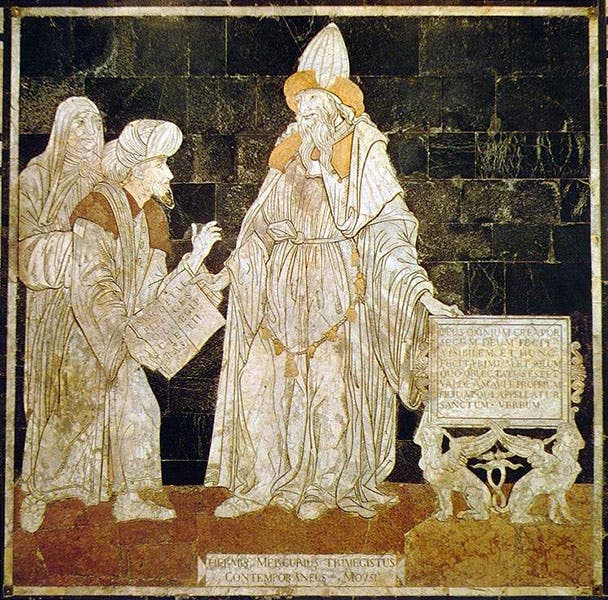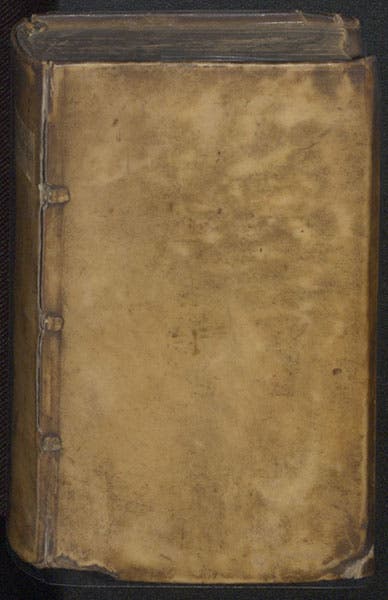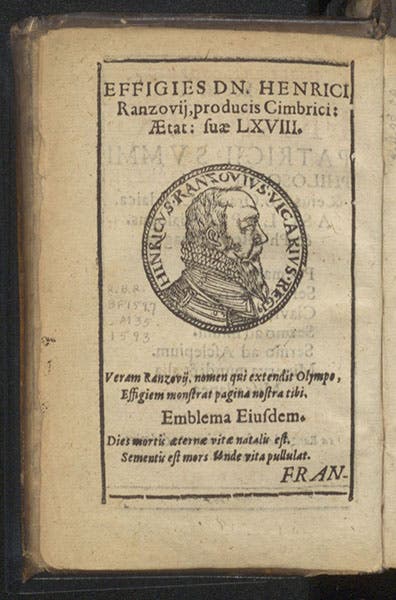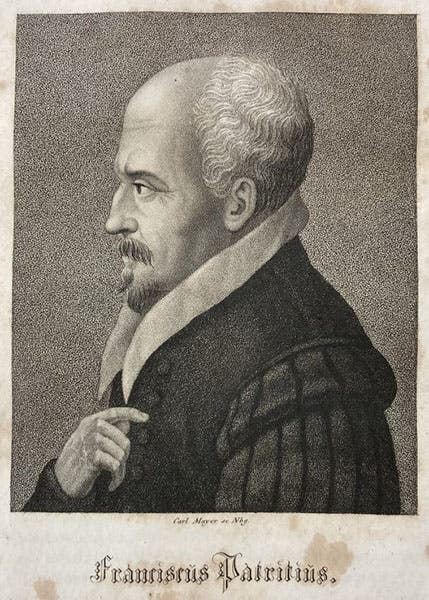Scientist of the Day - Francesco Patrizi
Francesco Patrizi, an Italian philosopher, was born Apr. 25, 1529. Patrizi was one of a small group of late Renaissance philosophers that are called "naturalists"--others in this camp are Girolamo Fracastoro, Girolamo Cardano, and Tommaso Campanella. The term “naturalist” is not a great one, since these philosophers were not returning to the study of nature (like some contemporary artists were doing, such as Albrecht Dürer, who are also called naturalists, but with quite a different connotation). Naturalist philosophers like Patrizi were trying to break the stranglehold of Aristotle on the university curriculum by criticizing his philosophy and introducing other authorities of even greater antiquity. Patrizi believed in what the Renaissance called a "prisca sapientia," an "ancient wisdom", representing the conviction that philosophy began with ancient sages such as Hermes Trismegistus, Moses, Zoroaster, and Orpheus, who inspired the Presocratic philosophers, with Plato being the culmination of this knowledge track. Aristotle was, by this view, the one who had perverted the ancient wisdom.
Patrizi's most important work, Nova de universis philosophia (New Philosophy of the universe, 1591), was a valiant attempt to replace Aristotelian physics and cosmology with an alternative view of nature, founded on Plato, on Neoplatonists like Plotinus, and on the Corpus Hermeticum, the small body of writings attributed to Hermes Trismegistus. Patrizi's book immediately ran into trouble with the Church because of its anti-Aristotelian stance, and it was placed on the Index in 1594. In this, Patrizi fared better than fellow naturalist Giordano Bruno, at this time already under arrest, and destined for the stake in 1600 for his intellectual transgressions.
We do not have the Nova de universis philosophia in our collections, although we have tried to find a copy for a long time. But we do have a copy of a work he published in 1593, Magia philosophica, which translated the major works of Hermes Trismegistus, as well as the Chaldean Oracles, assigned at the time to Zoroaster. This is a beautiful little volume, bound in vellum, and we show an opening here, and the binding. Patrizi said that this was based on a manuscript from the collection of Heinrich Rantzau, a wealthy merchant and book collector of Lübeck, up on the Baltic, and he even provided a woodcut portrait of Rantzau (fifth image). How Patrizi knew Rantzau and obtained the manuscript is a bit of a mystery, since Patrizi spent his time in Ferrara and Rome. He may have told us in the introductory matter, but I did not find an explanation.
Patrizi was not alone in attaching great importance to the Hermetic writings and the Chaldean oracles as precursors to pre-Socratic philosophy and Plato. However, many of his contemporaries had already begun to suspect that the Hermetic writings were not contemporary with the Pentateuch of Moses but must be much later, post-dating Plato and the New Testament. Patrizi refused to believe such arguments. Shortly after his death, the date of the Hermetic writings was firmly fast-forwarded from 1200 BC to 250 AD, rather tarnishing their status as an ancient source of wisdom, and considerably undermining the status of the prisca sapientia.
However, Patrizi did prove to be important for the scientific revolution of the 17th century in other ways. One of his most influential ideas was that of absolute space. In his New Philosophy, he proposed that space pre-existed everything, and that beyond our finite material universe there was an infinite space, devoid of all matter. This was a most un-Aristotelian idea, and it was picked up by Pierre Gassendi, and then the Cambridge Platonists, such as Henry More, and eventually by Isaac Newton, who made it a mainstay of his natural philosophy.
There are several contemporary woodcut portraits in publications of Patrizi that we do not have in the Library. He does not appear in the contemporary portrait books that we do have, such as the one by Jean-Jacques Boissard that we have often used in these posts. So we show instead an aquatint, based on the early woodcuts, from an early 19th-century set that we have with biographies of a few selected natural philosophers (sixth image). Its portraits are seldom seen in the historical literature.
Dr. William B. Ashworth, Jr., Consultant for the History of Science, Linda Hall Library and Associate Professor emeritus, Department of History, University of Missouri-Kansas City. Comments or corrections are welcome; please direct to ashworthw@umkc.edu.











